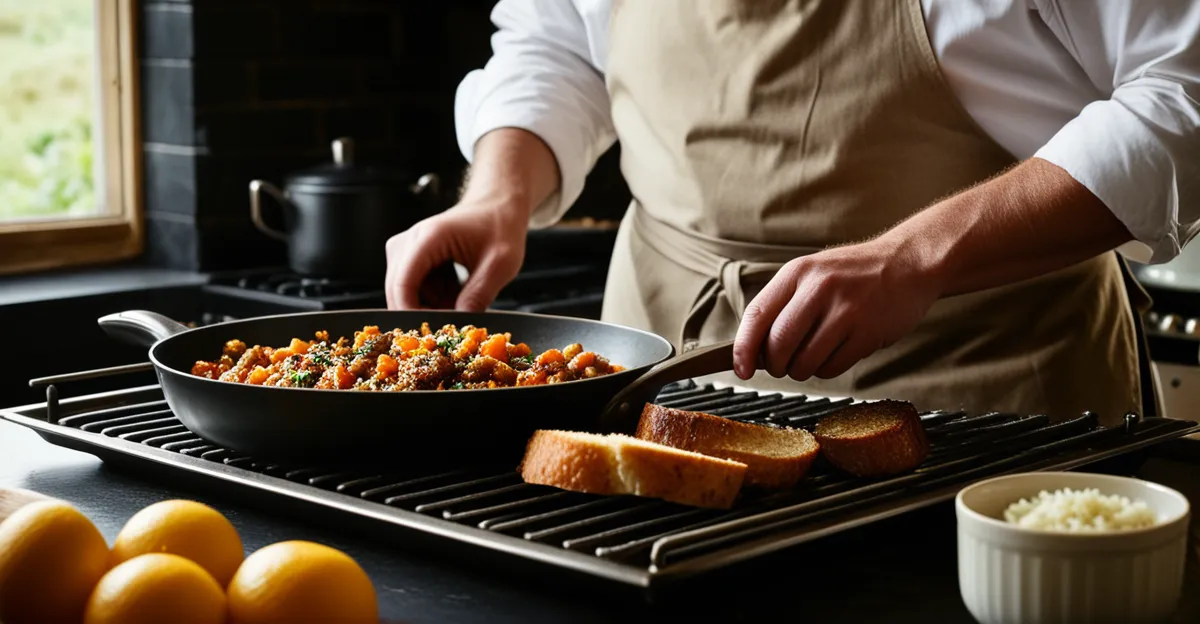Cultural Significance of Traditional UK Cooking Techniques
The historical roots of traditional UK cooking are deeply embedded in the country’s societal fabric and have significantly impacted modern cuisine. Britain’s culinary history features a rich tapestry of traditional recipes that have evolved over centuries. These recipes, passed down through generations, carry narratives of cultural heritage and are a testament to the country’s diverse historical influences.
In exploring regional variations, one can observe how these differences contribute to the broader British identity. Each region’s distinct techniques and ingredient choices reflect not only geographical influences but also the cultural identity of the local populace. For instance, the hearty stews of Scotland embody the rugged landscapes and utilize local, hardy ingredients that symbolize resilience and adaptation.
Topic to read : What are the best tips for making a delicious Cornish pasty?
Cooking techniques play a vital role in cultural heritage preservation. They are not just methods of food preparation but are pivotal in maintaining a connection to the past. Various methods like slow roasting, boiling, and baking evoke a sense of nostalgia and demonstrate the adaptability and resourcefulness of past generations. These techniques also underscore the importance of culinary history in shaping both personal and collective identities in the UK, further cementing their place in cultural traditions.
Through embracing these traditional cooking methods, individuals can reconnect with their roots, preserving precious cultural narratives within their communities.
This might interest you : How can you make a traditional trifle with a modern twist?
Benefits of Embracing Traditional UK Cooking
Incorporating traditional UK cooking methods not only helps preserve cultural customs but also offers notable benefits in terms of nutritional value, flavor enhancement, and sustainable practices. The advantages of these time-tested approaches contribute to the ongoing appreciation of the country’s culinary heritage.
Traditional recipes often prioritize whole, locally-sourced ingredients, which tend to be rich in nutrients. They typically emphasize seasonal produce, which is naturally more flavorful and aligned with nutritional needs throughout the year. The use of simmering and slow cooking in these recipes can ensure the preservation and enhancement of nutrients, providing meals that are both wholesome and hearty.
Moreover, traditional cooking methods are renowned for their ability to enhance the depth and complexity of flavors in dishes. Techniques such as slow roasting and braising allow ingredients to thoroughly develop flavors, resulting in a harmonious blend that is deeply satisfying to the palate. These methods, honed over centuries, often require patience and attention, guaranteeing that the end products are rewarding both in taste and texture.
Embracing these practices also supports sustainable practices, as they encourage the use of local, seasonal ingredients—limiting the carbon footprint associated with transporting goods over long distances. Additionally, the focus on traditional methods encourages mindful consumption, promoting a balanced and respectful approach to food preparation and consumption.
In conclusion, embracing traditional UK cooking methods offers a range of tangible benefits, reinforcing its value beyond cultural continuity. Through appreciating the nutritional value, flavor enhancement, and sustainability of these practices, one can better understand the invaluable legacy they represent.
Exploring Classic Traditional Recipes
Classic British dishes stand as culinary pillars, embodying the rich cultural heritage and history of the United Kingdom. These dishes, such as Yorkshire pudding, Cornish pasties, and shepherd’s pie, are celebrated for their ability to evoke nostalgia and maintain the essence of heritage dishes. They offer a glimpse into the past, detailing the UK’s culinary journey and its influences.
One significant aspect that makes these recipes special is the utilization of seasonal ingredients. By prioritizing fresh, local produce, traditional recipes align with nature’s cycles, ensuring peak flavors and nutritional benefits. Seasonal vegetables, meats, and herbs allow home cooks to engage fully with the cooking methods handed down through generations.
Adapting traditional recipes for modern kitchens can be both exciting and challenging. Keeping authenticity intact while making them more accessible involves understanding original ingredients and methods. Simple modifications, such as using contemporary equipment or substituting unavailable ingredients, can modernize these heritage dishes. Adaptations also include creating healthier versions by reducing fats or incorporating more fiber, demonstrating that tradition and modernity can coexist harmoniously. By embracing these recipes, modern cooks can blend the past with the present, creating a unique culinary legacy of their own.
Tips for Incorporating Traditional Techniques at Home
Integrating traditional UK cooking techniques into your culinary repertoire can transform home cooking into an exciting exploration of skill and taste. Here are a few tips to help you incorporate these time-honoured practices effectively:
First, familiarize yourself with key cooking techniques that form the backbone of traditional recipes, such as slow roasting, simmering, and baking. These methods have consistently been employed to enhance flavors and preserve the cultural heritage embedded in each dish. Having a comprehensive understanding of these can significantly enrich your home cooking skills.
Invest in quality kitchen tools and equipment that support these techniques, such as a sturdy cast-iron pot for simmering stews or a heavy-duty baking tray for roasting. These tools are essential in achieving the desired depth of flavor and texture characteristic of heritage dishes.
Additionally, consider resources that can further educate you on traditional cooking practices. Numerous cookbooks focusing on UK recipes provide in-depth insights, while online tutorials offer visual guidance in mastering these techniques effectively. By committing to ongoing learning, you maintain a connection with culinary traditions while expanding your culinary skills.
Finally, remember that the intention behind adopting these techniques is to preserve and celebrate culinary history. Embrace the slow, thoughtful nature of traditional methods, which not only result in delicious meals but also provide a meaningful, enriching cooking experience.
Comparing Traditional and Modern Cooking Approaches
In the culinary world, understanding the nuances between traditional cooking methods and modern techniques offers insight into the evolving nature of cuisine. While traditional methods focus heavily on rituals and ingredients that maintain cultural authenticity, modern techniques prioritize efficiency and innovation.
When comparing these two approaches, it’s essential to consider the pros and cons each brings to the kitchen table. Traditional cooking methods, such as simmering and slow roasting, often require time and patience. These techniques can enhance flavors significantly, developing complex taste profiles that are hard to replicate with modern methods. However, they can be time-consuming and less practical for busy lifestyles.
Conversely, modern techniques like sous-vide and pressure cooking prioritize speed and precision. While these methods can save time and maintain nutritional value, they may lack the deep, rich flavors typically found in traditionally prepared dishes. Each approach has its unique benefits, balancing heritage with contemporary convenience.
Combining traditional methods with modern techniques can lead to innovative culinary results. For instance, using a pressure cooker to tenderize meats before finishing them in the oven can create flavorsome, juicy outcomes more efficiently. This hybrid approach offers the best of both worlds—honoring cultural heritage while embracing the advancements of the culinary arts.






